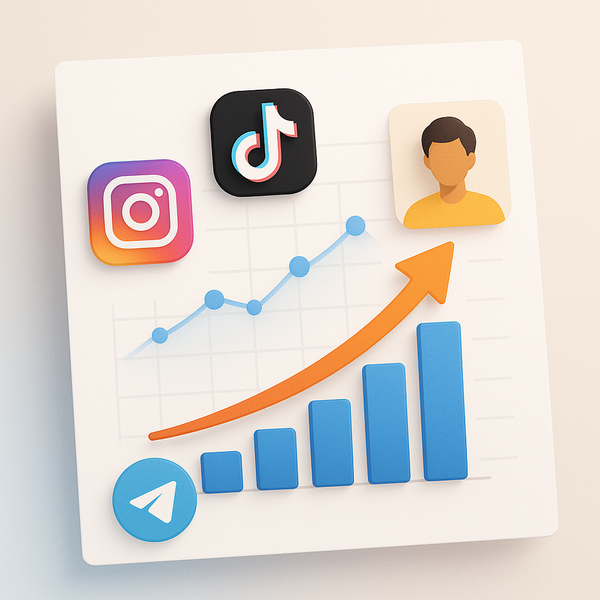How the Instagram Algorithm Works in 2024 (And How to Beat It)
In the quiet hours of a Sunday morning, a fitness influencer posted a 10-second Reel of her dog doing squats beside her. No promo, no hashtags, no trending audio—just a raw moment. By Monday evening, the video had 1.2 million views. What happened?
Welcome to Instagram in 2024, where the algorithm has new rules—and surprises. Understanding these changes isn’t a luxury anymore. It’s a necessity for creators, entrepreneurs, and anyone serious about winning visibility in a sea of content.
The Instagram Algorithm: Not One, But Many
First things first: there is no single Instagram algorithm. As confirmed in an official statement, Instagram uses different algorithms for Feed, Stories, Reels, and Explore. Each one prioritizes different behavior, which means there's no one-size-fits-all strategy for growth.
- Feed: Prioritizes recent posts from people you engage with consistently
- Stories: Focuses on timeliness and interaction (e.g., replies, emoji reactions)
- Explore: Surface-level interests based on past interactions
- Reels: Discoverability engine—rewards short, immersive, engaging content
Each pillar behaves like its own mini social platform. The trick? You have to program for all of them simultaneously.
Key Signals Instagram Uses in 2024
The Instagram algorithm isn't magic—it's math. Here are the top factors it evaluates when deciding what content to show users today:
1. User Activity
Instagram watches everything: whose posts you like, whose Stories you skip, what kind of music you engage with on Reels. It even factors in how fast and frequent your scrolls are on the Explore tab. The more aligned your content is with a user’s behavior pattern, the more likely it will surface organically.
2. Content Information
The algorithm parses your content for metadata like caption keywords, image recognition tags, video topics, and audio clips. Reels now benefit from AI-driven scene detection, which allows Instagram to understand if, say, your clip includes food, pets, or routines—and match it to users who like watching similar topics.
"Instagram is now as much a search engine as a social network."
—Emily Harrow, Social Strategist at Arc Media Globale
3. Engagement History
Instagram’s memory is long. If users have previously commented on your posts, messaged you, or viewed your Stories, future content from you is more likely to rank higher in their Feed—and even in their notifications.
4. Post Timeliness & Consistency
Recency still matters. Regular posting builds equity with the algorithm, especially if you're consistent across all formats (Reels + Feed + Stories). But binge-posting no longer yields a boost—in fact, it could suppress visibility.
Reels Are Still King, But the Throne Is Evolving
Reels dominate discoverability in 2024, but the game has changed. You can no longer rely on trending audio alone. Algorithm updates now deprioritize low-effort copycat content in favor of originality and authenticity.
What’s Working Now:
- UGC-style storytelling: Real voices and first-person POVs outperform polished edits
- Strong hooks in first 3 seconds: Captions like “I bet you didn’t know this…” or on-screen text
- Native engagement boosts: Comments, saves, and shares matter more than likes
Using Crescitaly's advanced panel tools, creators can now monitor which Reels are gaining traction in the Explore feed versus just their followers. This offers critical insight into what themes are grabbing wider attention—essential for fine-tuning future content.
Algorithm Nuances on Other Platforms
The social ecosystem doesn't operate in a vacuum. Instagram’s inner workings often parallel what's trending on TikTok, YouTube Shorts, and Telegram. Here’s how the algorithms compare:
TikTok
The TikTok algorithm leans heavily on watch time and content similarity signals. Users see content even from small accounts if it holds attention for long enough. Hashtags matter—but hooks and retention matter more. TikTok also tracks iterations of viral concepts at the caption and audio level.
YouTube Shorts
Here, algorithm strength depends on click-through rates (CTR), watch time, and quick replays. Recycled content from other platforms rarely performs well unless natively optimized. Compelling thumbnails still matter—even for Shorts.
Telegram
You might not think of Telegram as algorithm-driven, but channels powered by large audiences face relevance filtering based on poll responses, link click-throughs, and admin post frequency. The platform has quietly become a goldmine for niche community engagement—especially for crypto, education, and behind-the-scenes content.
How to Reverse-Engineer the Algorithm
Here are real-world tactics, distilled from marketers and creators who consistently outperform algorithm updates:
1. Use Data, Not Gut
Monitor content performance weekly. Using tools like Crescitaly.com, you can identify peak engagement times for each platform, demographic behavior shifts, and content collisions (topics your audience is tired of). Build your calendar around those insights, not hunches.
2. Master Format-Specific Cadence
- Instagram: 3 Reels, 2 Stories, 1 carousel per week
- TikTok: Daily short-form posts under trending topics + 1 long-form anchor video weekly
- YouTube Shorts: Batch publish around a niche but vary visual storytelling
- Telegram: Value-first updates, polls, and gated resources
3. Collaborate Strategically
Co-created content now doubles reach in both Feed and Explore. Instagram’s Collabs feature gives priority placement to shared posts. Look for micro-influencers in adjacent niches—fitness + nutrition, fashion + home decor—to amplify discoverability.
4. Engage Like a User
Instagram favors creators who behave like users. That means responding to comments within 24 hours, visiting other creators’ pages, and interacting beyond DMs—polls, Q&As, emoji slides all signal that you're not just broadcasting; you're part of the ecosystem.
Conclusion: The Algorithm Isn't Out to Get You
Yes, the Instagram algorithm has changed in 2024. But beneath its layers of machine learning lies a simple truth: it wants to show users the content they’ll care about, from the people they trust or want to discover.
If that’s you—and your content speaks their language—you’ll win. If not, it’s time to recalibrate.
Platforms like Crescitaly have become essential in decoding these shifts and adapting quickly. Whether you're a social media manager running five brand accounts or a creator ready to go full-time, beating the algorithm starts with understanding it deeply—and creating with intention.
Here’s What To Do Next:
- Audit your last 10 posts. Which formats drew saves or shares?
- Segment your audience by behavior (commenters vs ghost followers)
- Try Reels-first strategy for the next 14 days—optimize for hook + retention
- Create content for your future audience, not just your current one
Remember: the algorithm follows the user. And you should, too.
Meta Title: How the Instagram Algorithm Works in 2024
Meta Description: Discover how Instagram's algorithm works in 2024 and proven ways to boost reach across Reels, Stories, and Explore.
Tags: Instagram, TikTok growth, SMM panel, YouTube Shorts, Crescitaly, social media marketing, Telegram channels





